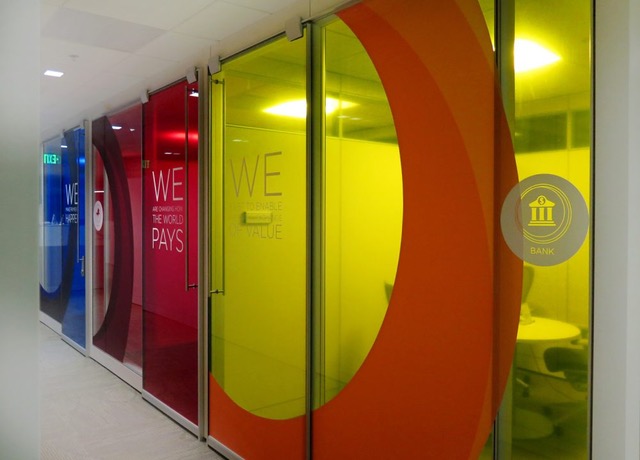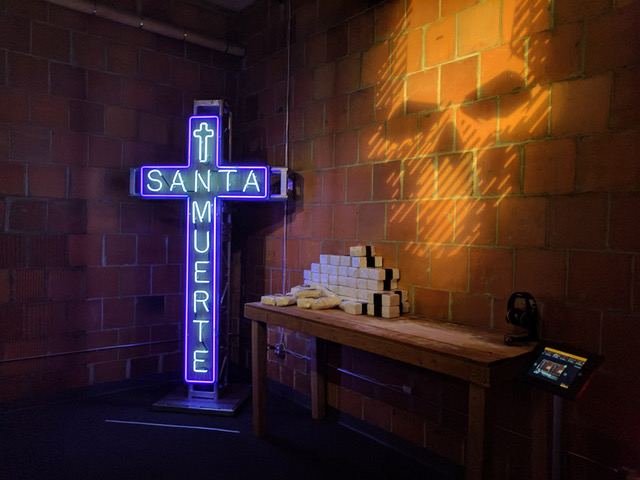This past year we worked with Dynamite Digital to bring our 2017 theme, Question Everything, to life at the Design Hub at Pier 27. The team was so helpful at finding just the right printing options for our large-scale needs that we asked them to share some insights with our community!
Designers can often struggle to convert their colorful, intricate plans from the computer monitor to real life. Those frustrations can be amplified when unfamiliar with the production process and materials. In this edition of Material Expertise, we break down adhesive vinyl, a versatile material used by printing experts for tackling interior and exterior design challenges is a widely used substrate that translates perfectly with today’s trending aesthetics.This post will give a brief overview on how adhesive vinyl can be used to overcome the challenges of shifting a project from design to installation and tips for scaling designs for large scale events.
What is Adhesive Vinyl?
When someone says “vinyl”, most people immediately think hipsters and records. Well, imagine those records melted down, mixed with color and pressed less than 1mm thick into large rolls of media, with an even thinner adhesive coating on the back; that’s adhesive vinyl. What makes it great to use? Versatility! Manufactured in a wide range of colors and finishes, it is easily tailored to individual needs and is often the most cost-effective option.

Where and When to use Vinyl
When you need a logo on a window, on a door, on the side of a building, use vinyl. Think of vinyl graphics as industrial stickers that can stick to any flat surface. Like stickers, vinyl comes in different qualities. Depending on the type, your graphic will stay up for 3 days or 3 years so it’s great for temporary or long-term uses.

Printed Vinyl
Any photo, any graphic, can be printed and applied to any surface, creating amazing branding opportunities and immersive environments. The only limitation is one’s own imagination. The picture below is a great example of how a gaming company used adhesive vinyl to create a fake brick room for a video game launch. Layered elements like light projections and physical props completely transform the space from boring neutral office decor into a lively release party. After the event, the graphics were easily removed from the walls and the space returned to its original condition.

Cut Vinyl
Cut vinyl is produced using a plotter / cutter that can read vector paths (Adobe Illustrator artwork) and cuts along those paths with extreme precision. Below is an example of a museum taking advantage of several aspects of adhesive vinyl. The museum created original psychedelic artwork, printed the graphic in sections and then used vector paths to cut out a mask of text. If you know how to use vector graphics, then mastering cut vinyl will be easy.

Specialty Vinyls
When regular matte or gloss just won’t impress the client, there is a huge range of specialty self-adhesive vinyls that imitate the look, feel and function of more uncommon materials. Specialty vinyl can be transparent, perforated, metallic, frosted, textured and even holographic. Below is an image of how a business used a holographic vinyl to create a unique spectrum of iridescent colors for a stage backdrop.

From the Printer to the Designer
We hope this short blog post helped you learn more about the possibilities of working with adhesive vinyl. Knowing what material is right for the job can be a puzzling and risky decision. When in doubt, ask the professionals.
If you found this post helpful and would like to learn more about vinyl and other materials, please feel free to visit us at Dynamite Digital

